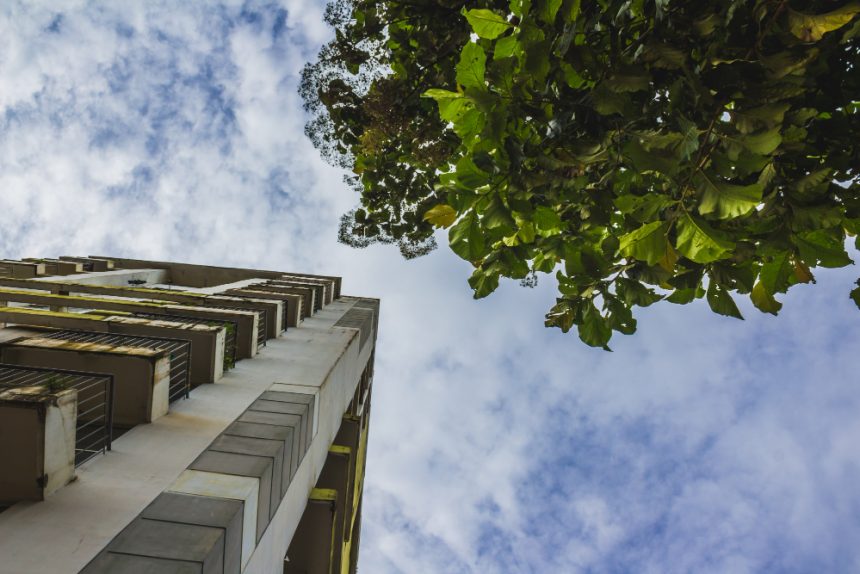Urban areas are often considered the heartbeats of modern life—full of bustling streets, towering skyscrapers, and endless activity. But underneath all that concrete and asphalt, there’s a quiet, natural power at play: greenery. Have you ever noticed that neighborhoods with more trees, parks, or green rooftops tend to stay a bit cooler during those scorching summer days? That’s no coincidence. Scientists and urban planners have been exploring how urban plants influence air temperature, and the evidence suggests that our green spaces do more than just look pretty—they play a vital role in cooling our cities.
Why does this matter? Cities are notorious for the “urban heat island” effect, where built-up areas trap more heat than surrounding rural areas, making urban summer days unbearable and increasing energy consumption for cooling. Urban plants can help counteract this problem in several ways. In this article, we’ll take a closer look at what current research reveals about how different types of greenery help regulate temperature, which strategies are most effective, and how cities around the world are harnessing nature’s cooling powers to create more livable, resilient environments.
We’ll explore key scientific findings, real-world case examples, and future opportunities for integrating more greenery into urban landscapes. Whether you’re a city resident curious about how to stay cooler, an environmental enthusiast, or a planner exploring sustainable solutions, understanding the relationship between urban plants and air temperature is crucial for building healthier, more comfortable cities.
What the Research Tells Us About Plant-Based Cooling: Key Findings, Challenges, and Opportunities for Greening Urban Spaces to Combat Rising Temperatures
Diving into the scientific studies and projects conducted worldwide, a clear picture emerges: urban plants are powerful allies in our fight against rising temperatures. Here’s what the research consistently shows:
1. Plants Lower Temperatures Through Shading and Evapotranspiration
One of the main mechanisms by which greenery cools urban spaces is shading. Trees and shrubs literally block sunlight from hitting hot surfaces like roads, pavements, and buildings, preventing surfaces from reaching peak temperatures. But there’s more to it than just shade.
Evapotranspiration—a fancy word for how plants release water vapor—acts like a natural air conditioner. As plants transpire, they absorb heat from their surroundings, turning water into vapor, which cools the air around them. Several studies in North American cities have demonstrated that areas with dense canopies of healthy trees can be 2–5°C cooler during the hottest parts of the day compared to areas with little or no greenery. This effect isn’t just localized; it can significantly reduce the urban heat island effect across neighborhoods.
2. Vegetation Influences Wind Flow and Humidity
Urban greenery also alters wind flow patterns, which can help disperse heat and bring cooler air into hotter areas. Green corridors—long, continuous stretches of trees and plants—are especially effective in funneling breezes through city streets, providing some much-needed relief during summer heatwaves.
In addition, plants increase local humidity through transpiration, which can be beneficial in dry urban climates. However, in very humid environments, this could potentially have mixed effects, sometimes making conditions feel warmer if not managed properly.
3. Effectiveness Depends on Plant Species, Placement, and Maintenance
Not all plants are created equal when it comes to cooling. Larger canopies, such as those from mature trees like oaks or maples, provide more shade and transpiration than smaller shrubs or young saplings. Strategic placement—such as planting trees along streets, near buildings, or over parking lots—maximizes the cooling benefits.
Maintenance is also key. Healthy, well-pruned trees stay vigorous and provide consistent shade and evapotranspiration. Conversely, poorly maintained greenery can die back or become a source of pollen or water stagnation, which might pose other urban challenges.
4. Challenges and Limitations
Despite the promising findings, increasing urban greenery isn’t without challenges. Urban development often leaves limited space for large trees, and planting efforts require ongoing maintenance and investment. Selecting the right species suited to local climate and soil conditions is vital for long-term success.
Water use is another consideration—while watering can promote healthy growth, over-reliance on irrigation isn’t always sustainable, especially in drought-prone areas. There’s also the concern of pollen allergies or pests associated with certain plants.
5. Innovative Strategies and Future Directions
To get the most out of urban plants’ cooling potential, researchers and city planners are exploring innovative solutions:
- Green Roofs and Walls: These layers of vegetation atop buildings can substantially lower indoor and outdoor temperatures, reduce energy use, and improve air quality.
- Street Tree Programs: Expanding tree planting initiatives along sidewalks and in parks helps buffer urban heat islands efficiently.
- Green Corridors and Parks: Connecting green spaces across neighborhoods encourages airflow and creates larger cooling zones.
- Technology-Driven Approaches: Using sensors and climate modeling, urban planners can determine the best locations and plant species for maximum cooling benefits.
Overall, these efforts highlight that strategic greening combined with community involvement can turn cities into cooler, healthier places to live—even amid climate change.
Wrapping Up
The science is clear: urban plants matter. From providing shade and releasing moisture to influencing wind and humidity, greenery has a tangible, measurable impact on city air temperatures. While challenges remain—like space constraints, maintenance, and species selection—the opportunities are vast. Cities worldwide are increasingly recognizing that integrating more green spaces isn’t just beautifying—they’re creating climate-resilient environments that protect residents from extreme heat.
As urban populations grow and temperatures rise, leveraging nature’s cooling powers offers a sustainable, cost-effective, and enjoyable pathway toward making our cities more livable. Whether you’re a policymaker, a community organizer, or a city dweller, understanding and supporting urban greening initiatives can help cool our cities and improve quality of life for everyone.






